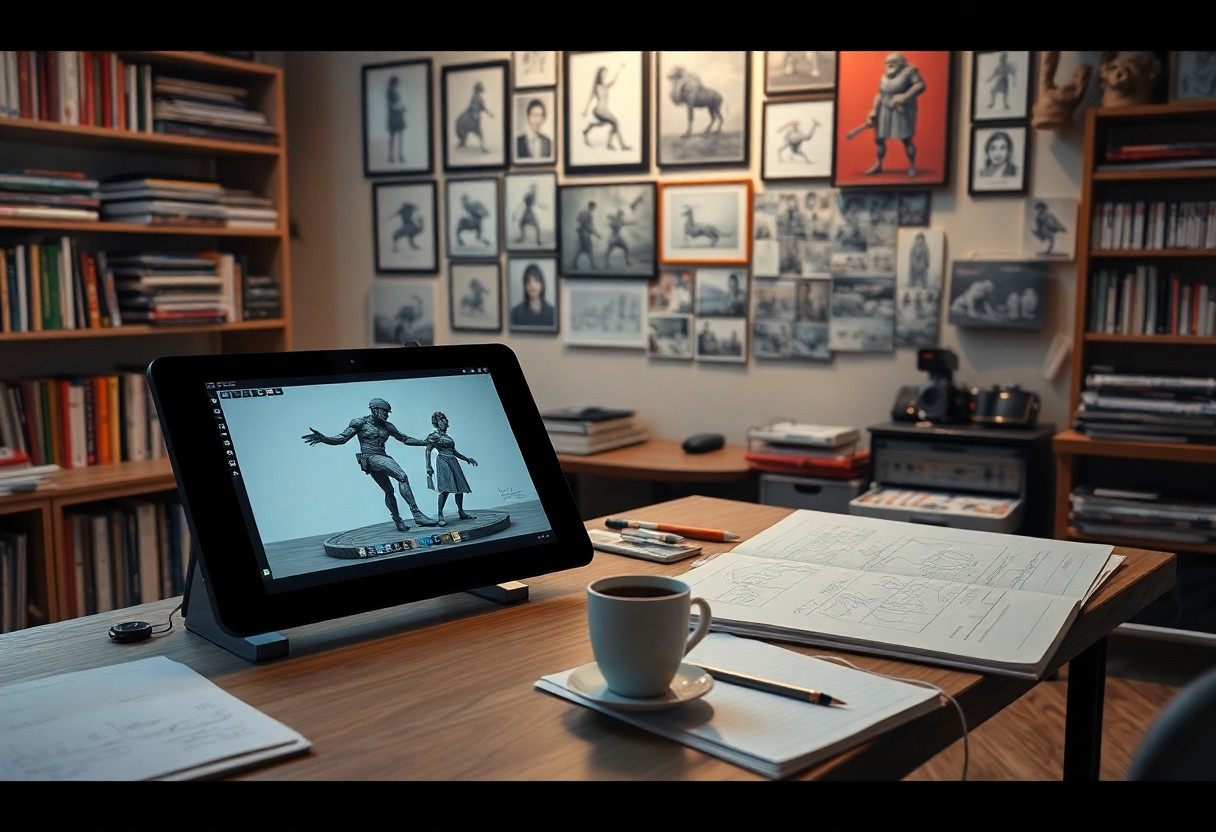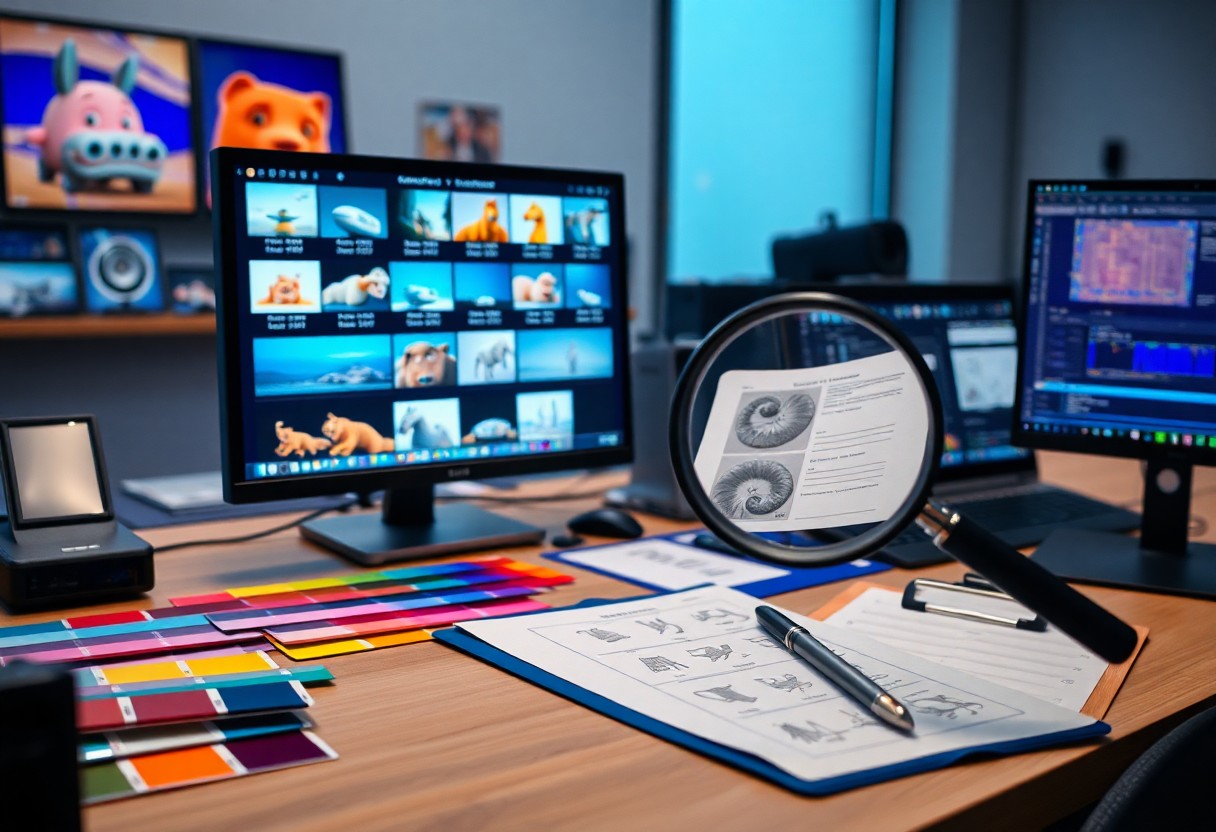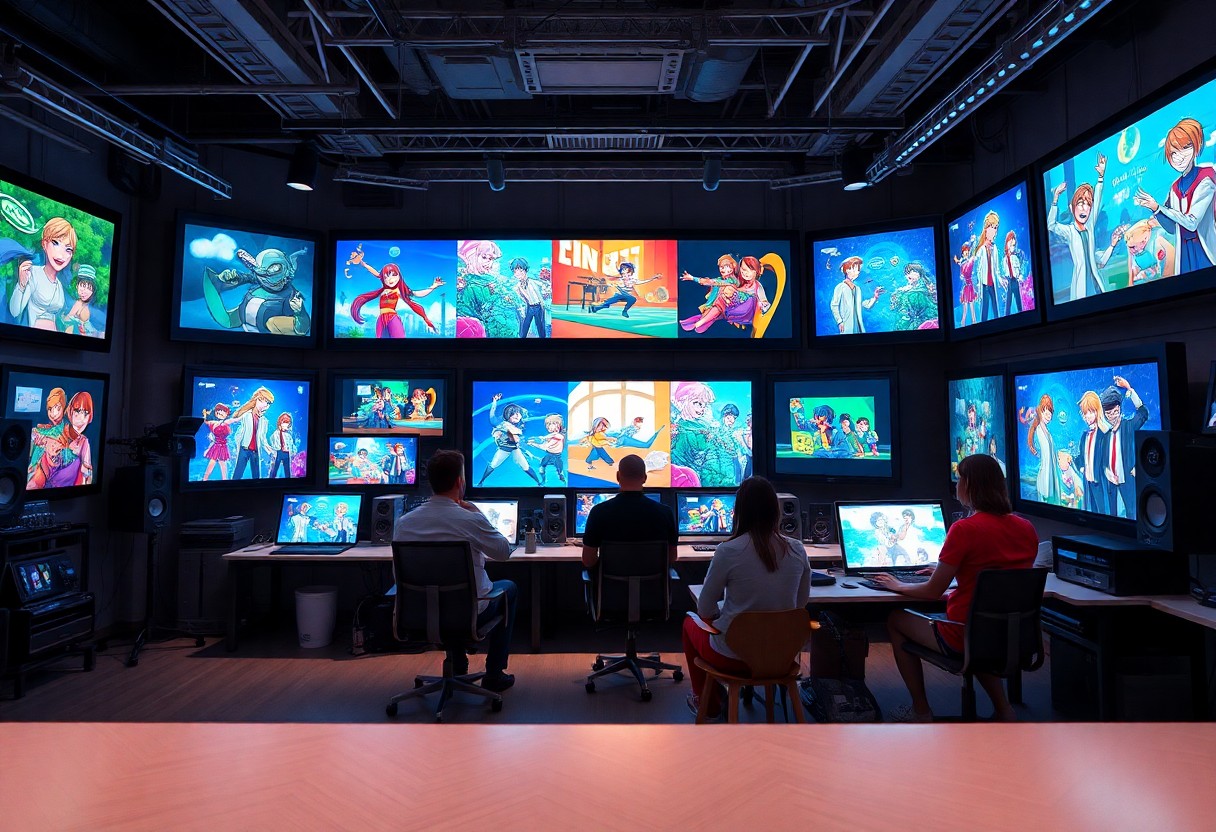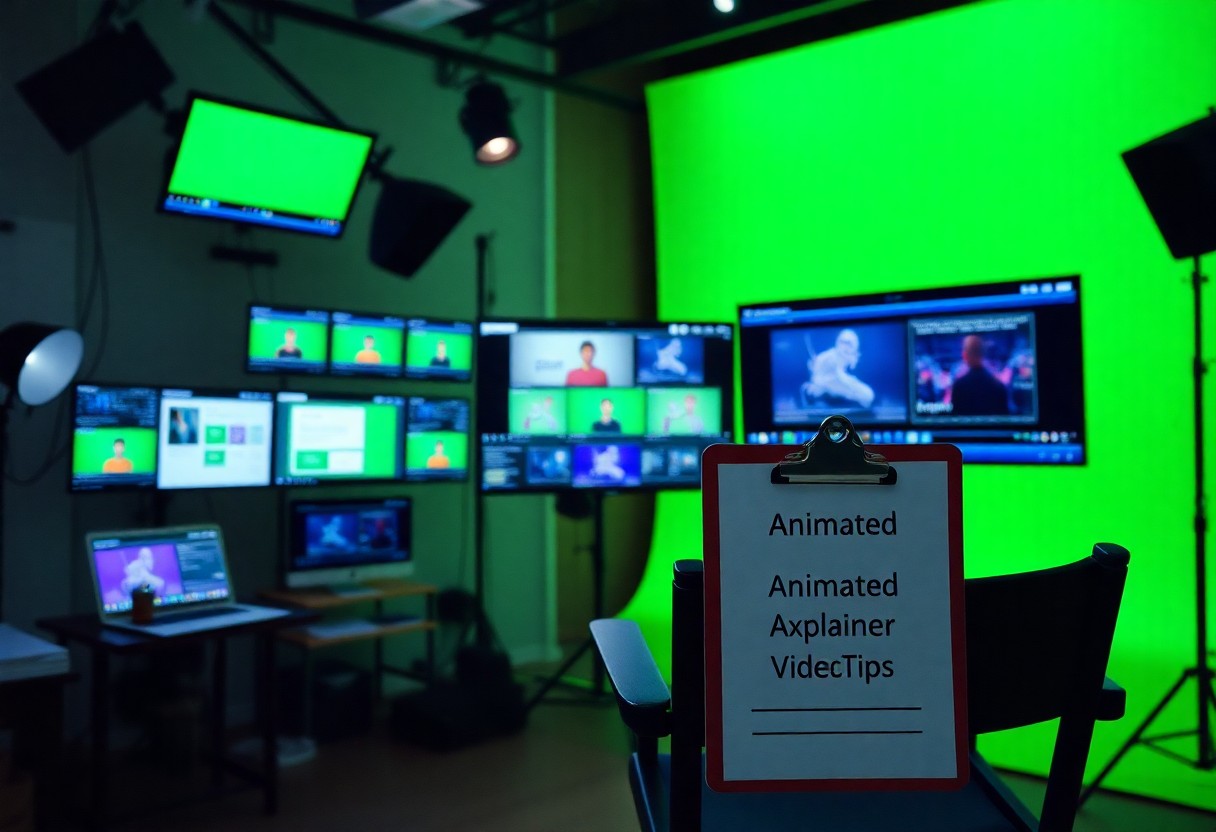
Aug 14, 2025
Behind the Scenes – Our Creative Process at Animaxon
Many people are curious about the inner workings of creative projects, and at Animaxon, I’m excited to share our unique process. From the initial brainstorming sessions to the final touches of animation, every step is meticulously crafted to ensure high-quality results. Engaging with your feedback allows us to shape our vision and enhance our creativity. In this post, I’ll take you through each phase, highlighting the challenges and triumphs that define our work, so you can understand the dedication that goes into every frame we create.
Key Takeaways:
- Our creative process is collaborative, involving every team member in brainstorming and idea development.
- We emphasize research and exploration to ensure our projects are innovative and resonate with our audience.
- Prototyping and testing are integral steps that allow us to refine concepts before final production.
- Feedback loops from both internal teams and external viewers are important in shaping the final output.
- We prioritize an open and adaptive environment, encouraging experimentation and learning from both successes and setbacks.
The Spark of Inspiration: Igniting Our Ideas
The journey from a mere fragment of an idea to a fully-realized project begins with that elusive spark of inspiration. It often arrives unexpectedly—a moment of clarity during a mundane task or a vivid dream that unfolds into a narrative. This initial igniting point sets the tone for our projects, fostering emotions, concepts, and themes that resonate throughout the entire creative process. The spark can be anything: a phrase in a book, a scene from a film, or even a conversation overheard on the street. From there, the magic begins to unfurl.
Sources of Creative Fuel
Our inspirations come from varied and eclectic sources. I draw from books, art, nature, and even personal experiences. Art exhibits allow me to immerse myself in visual storytelling, while taking walks in nature often leads to remarkable breakthroughs. Conversations with friends and team members can also bring light to aspects I hadn’t considered before. Each source acts as a catalyst, sparking new ideas and directions for our projects.
The Role of Team Brainstorming
Brainstorming sessions form the core of our collaborative efforts, allowing each team member to contribute their unique perspective. This interactive setting brings forth a wealth of ideas, some fully formed and others just seeds ready to blossom. With an open floor for discussion and creativity, we can explore unconventional paths that may lead to innovative solutions. Person-by-person contributions create a rich tapestry of concepts, paving the way for dynamic discussions and unexpected collaborations that elevate our projects.
During these sessions, we might use techniques like mind mapping or free writing, which help visualize connections and expand upon initial thoughts. This collaborative atmosphere fosters a sense of camaraderie and trust, which encourages everyone to share without the fear of judgment. It’s not uncommon for an idea to evolve into something completely different by the session’s end, thanks to the input from various team members. This synergy often results in breakthroughs, transforming a single idea into an intricate narrative or character arc that captivates our audience.
Crafting the Vision: From Concept to Storyboard
Transforming an initial idea into a full-fledged storyboard is an exhilarating yet meticulous process. I start by gathering thoughts and snippets of inspiration, consolidating various concepts into a cohesive vision. Every story deserves a unique approach, which leads us to the next pivotal stages where creativity melds with structure, ensuring the narrative flows seamlessly from one scene to the next.
Building a Comprehensive Story Arc
A well-structured story arc is fundamental in guiding the narrative’s emotional journey. An effective arc includes a clear beginning that introduces conflict, a middle that amplifies tension, and a satisfying resolution. Through methodical brainstorming sessions, I outline key plot points and character development, ensuring the story not only captivates but resonates deeply with the audience.
Visual Aesthetics: Designing Mood Boards
Creating mood boards is an integral part of visual storytelling, capturing the essence of the narrative through textures, colors, and imagery. These boards serve as a visual compass, reflecting the atmosphere we aim to convey and steering design decisions throughout the project.
A mood board is more than a collage; it’s a powerful tool in our arsenal at Animaxon. By compiling images, color palettes, and textures, I distill the themes and emotions that will underpin the visuals. This process allows the entire team to be aligned on the project’s aesthetic direction. For instance, in one of our recent projects, I incorporated vibrant, contrasting colors that echoed the protagonist’s internal struggle. This visual guideline not only defined our artistic style but also ensured that every frame produced aligned with the overarching vision, paving the way for a coherent viewer experience. I’ve found that mood boards spark collaborative discussions, leading to greater creativity and innovation as we begin on the animation journey together.
The Collaborative Studio: Merging Talents
Working at Animaxon means being part of a dynamic and innovative environment where every team member’s strengths are harnessed for a collective vision. The beauty of our studio lies in the diversity of talents—animators, writers, designers, and sound engineers all converge to create something greater than the sum of its parts. This synergy not only enhances creativity but also fosters a culture of mutual respect and constant learning.
The Importance of Cross-Disciplinary Teams
Cross-disciplinary teams drive creativity by blending various perspectives and skills. Not only do different members bring unique approaches to problem-solving, but they also stimulate new ideas born from the intersection of their expertise. Collaborating with specialists from different backgrounds allows us to push our creative boundaries and develop multifaceted projects that resonate on numerous levels.
Tools and Techniques for Effective Collaboration
Utilizing technology like project management tools, virtual collaboration platforms, and real-time feedback applications has transformed our creative process. Tools such as Trello and Slack enable seamless communication, while cloud-based platforms allow team members to work simultaneously on projects, enhancing output and efficiency. We’re not just creating; we are adapting the way we work together to innovate more rapidly.
These tools facilitate a more integrated workflow, ensuring everyone remains aligned on project goals and timelines. For example, using a tool like Miro allows our artists and designers to visualize concepts in real time, providing necessary context to every team member involved. Having multiple perspectives applied to a project at once can lead to breakthroughs that would be difficult to achieve alone. I find that employing these techniques nurtures not only collaboration but also a spirit of experimentation, allowing us to explore and develop rich, compelling narratives together.

Quality Assurance: Polishing the Final Product
This stage is where everything comes together. Thorough quality assurance ensures that every frame, sound, and effect meets high standards before it reaches our audience. Attention to detail is paramount; I meticulously examine each element, making certain that animations align perfectly with soundtracks, and that every transition flows seamlessly. The final product must not only tell a story; it should evoke emotion and captivate viewers immediately.
Feedback Loops and Iterative Processes
To enhance the quality further, I rely on rigorous feedback loops and iterative processes. After each stage of development, the team gathers to review the work, allowing us to catch inconsistencies early. By incorporating feedback from peers and directors, I refine the animation, often leading to unexpected and innovative improvements that elevate the final product significantly.
The Art of Final Edits and Revisions
Final edits and revisions are where the magic truly happens. This phase is not just about correcting errors but about enhancing the overall narrative and visual impact of the project. I often re-assess pacing, tighten dialogues, and ensure visuals effectively support the story arc. Each tweak has the potential to transform the work from good to great, and I relish in the opportunity to give our projects that extra polish.
Engaging in the art of final edits and revisions can feel like sculpting a masterpiece; it requires both precision and an eye for detail. You may find that adjusting a single frame or tweaking a sound effect can completely shift the audience’s perception. Talented voice actors and sound designers lend their skills, and I exploit every ounce of this collaboration—sometimes even having multiple versions of scenes to compare. This layering not only enriches the narrative but also ensures that we maintain the highest standards that Animaxon is known for. The final output should resonate with audiences, leaving them both entertained and emotionally connected.
Sharing Our Work: Engaging with the Audience
Interacting with our audience is a vital part of the creative journey at Animaxon. By sharing our projects across various platforms, we build a community around our work, engaging viewers in meaningful ways. Each new release sparks conversations, allowing us to connect directly with fans and gather insights that drive our future endeavors. This engagement fuels our passion and creativity, reinforcing our commitment to telling stories that resonate.
The Role of Marketing and Promotion
Effective marketing and promotion serve as the bridge between our creations and the audience. Utilizing a mix of social media campaigns, targeted ads, and collaborations with influencers, I ensure that our projects reach their intended audience. This multi-faceted approach not only amplifies our work but also creates buzz and anticipation leading up to each launch.
How Audience Feedback Shapes Future Projects
Audience feedback is a goldmine that informs our future projects. I analyze comments, reviews, and engagement metrics to understand what resonates most. By paying attention to audience reactions, I identify areas for improvement and innovative ideas that can enhance our storytelling, ensuring that each project evolves based on real-world responses.
Diving deeper into how audience feedback shapes our projects, I often look for patterns in viewer preferences. For example, after releasing a series that emphasized character development, viewer comments highlighted a desire for deeper backstories. This insight led me to explore interactive narratives in our subsequent projects, fostering a collaborative relationship where the audience feels like a part of the creative process. The incorporation of detailed surveys and post-release discussions has proven invaluable, making every project not just a product but a shared experience.
Summing up
With these considerations, I hope you have gained insight into the creative process at Animaxon. My team and I dedicate ourselves to transforming ideas into captivating visuals, blending innovative concepts with technical expertise. By understanding the nuances of your vision, I strive to create a collaborative experience that produces quality content. Ultimately, my goal is to bring your stories to life through the artistry and passion that define our work.
FAQ
Q: What does the creative process at Animaxon involve?
A: The creative process at Animaxon is a collaborative effort that combines brainstorming sessions, storyboarding, design, and animated production. It begins with an idea, which is developed through discussions among our talented team members, including writers, artists, and animators. After establishing a concept, we create storyboards and character designs, followed by the animation phase where we bring our vision to life. Quality assurance and feedback loops ensure that the final product aligns with our creative goals.
Q: How does the team communicate during the creative process?
A: Our team utilizes various communication tools to facilitate collaboration. Regular meetings, both virtual and in-person, allow team members to share updates and provide input. We also use project management software to keep track of progress and deadlines, ensuring everyone is aligned. Creative discussions often take place through dedicated channels where team members can share ideas and feedback in real-time, fostering a dynamic and open environment for creativity.
Q: What techniques do you use to inspire creativity during the project?
A: To inspire creativity, we encourage a culture of exploration and open-mindedness. Techniques such as brainstorming sessions, workshops, and team-building activities help our team think outside the box. We also draw inspiration from various sources, including films, books, and art from around the world. Additionally, allowing team members to participate in outside creative endeavors can also bring fresh perspectives and innovative ideas back to our projects.
Q: How do you handle revisions and feedback during the production process?
A: Feedback is an integral part of our production process at Animaxon. We establish a system for constructive critique, where team members can provide insights without discouraging creativity. Revisions occur at multiple stages, and we prioritize incorporating feedback to enhance the project. After initial drafts, we conduct reviews, allowing team members to evaluate both the animation and story elements. This collaborative feedback loop helps refine our work, leading to a better final product.
Q: Can clients be involved in the creative process?
A: Yes, we value client collaboration throughout the creative process. We believe that client involvement fosters a stronger partnership and leads to more satisfying outcomes. Clients are encouraged to share their vision and ideas during initial meetings and can provide feedback at various stages, including concept development and storyboard reviews. Regular updates keep clients informed, and we welcome their insights to ensure that the project aligns with their expectations and goals.



